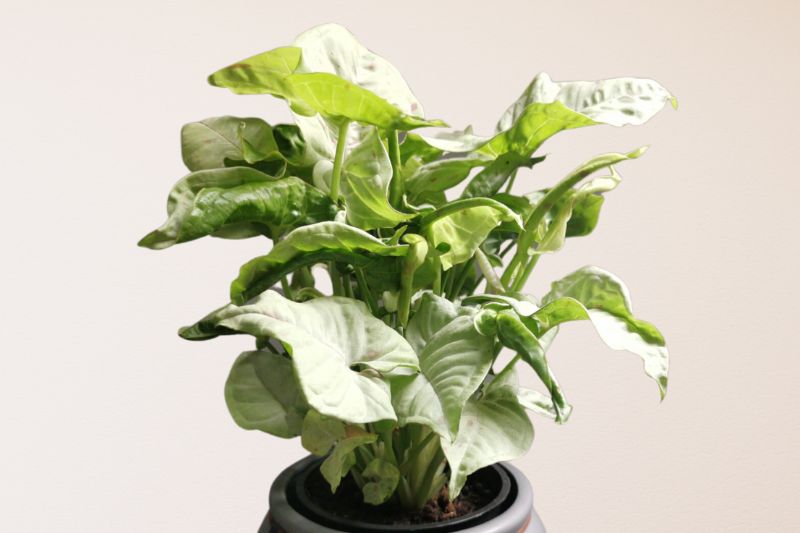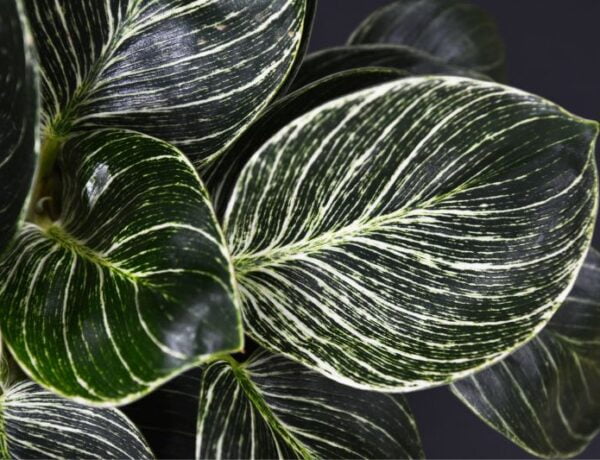Syngonium Confetti is a great pick for those seeking a low-maintenance plant that can brighten any space with its pink-splashed leaves!
In this guide, I’ll share with you the straightforward and effective ways for making this houseplant thrive. From basic care requirements to propagation and maintenance, I’ve got you covered!
Table of Contents
1. General Information & Quick Care Guide
| Scientific name: | Syngonium podophyllum ‘Confetti’ |
| Common names: | Arrowhead plant, Arrowhead vine |
| Toxicity: | Toxic to pets |
| Mature size: | 1-3 feet (30-90 cm) in height |
| Growth Rate: | Fast-growing |
| Watering Requirements: | Moderate; when topsoil is dry |
| Light Requirements: | Medium to bright indirect light |
| Humidity & Temperature Requirement: | High humidity; 60-75°F (15-24°C) |

2. Syngonium Confetti Care & Growing Requirements
- Watering
Syngonium Confetti prefers to be watered when the soil feels dry to the touch and the pot feels light, which usually happens twice or thrice a month.
I personally prefer to bottom water my Confetti plant, as it ensures an even water distribution, promotes healthy root growth, and also prevent overwatering and root rot. I also occasionally top water it to flush out the salt and minerals accumulated in the soil.
- Light
Syngonium plants are quite adaptable when it comes to light requirements, and Confetti is no different. Ideally, you’d want to place your Confetti in a spot with bright, indirect light, where it can receive enough brightness without direct exposure to sunlight, as it can scorch its leaves.
My Syngonium plant has been thriving in a spot with medium to bright indirect light. It has shown robust growth with new leaves developing consistently. In my case, the light comes from above, so there’s no need to rotate it. However, if you’re keeping your Syngonium on the windowsill, make sure to rotate it every few weeks to promote even growth.
- Soil
A well-draining, peat-based potting mix is ideal for Syngonium Confetti. This type of soil supports the plant’s need for balance between moisture retention, soil aeration and drainage.
- Temperature
Syngonium Confetti prefers a warm environment, typically between 60°F and 75°F (15°C to 24°C). You should aim for consistency in this case, avoiding cold drafts and fluctuating temperatures.
- Humidity
Contrary to popular belief, my Syngonium Confetti has been doing quite well in average household humidity. However, higher humidity levels (40 to 60%) can be beneficial for more vigorous growth.
If your plant is in a dry spot, try to increase the humidity levels by using a humidifier, grouping plants together or by adding a pebble tray under its pot.
- Fertilizer
Fertilize every two weeks during the growing spring and summer with a balanced, water-soluble fertilizer. You can use a fertilizer with an even NPK ratio (10-10-10 or 20-20-20).
Make sure to follow the package direction to avoid over-fertilization, as this can lead to salt buildup in the soil, ultimately damaging the plant.
3. Syngonium Confetti Maintenance and Propagation
- Repotting
Syngonium Confetti should be repotted every 2-3 years or when it outgrows its current pot. Choose a pot with drainage holes and only slightly larger than the previous one.
- Pruning
Pruning helps maintain a bushy and attractive appearance. You can trim back leggy stems and remove dying leaves to keep your Syngonium in the desired shape.
- Propagation
Syngonium Confetti can be easily propagated through stem cuttings. Place a cutting in water or moist soil until roots develop, then pot it in a suitable soil mix.
Keep in mind that Syngonium species are naturally vining plants. In their natural habitat, they often climbs trees and other structures. However, when grown indoors, they can show a more upright and bushy growth habit, especially when they are young or when regularly pruned.
So if you can’t seem to find a viable stem for propagation, that might mean you’re plant didn’t reach adulthood yet.
4. Common Issues
- Leaves Turning Yellow: Often a sign of overwatering. Reduce the watering frequency and try to bottom water your plant when the soil feels dry to the touch and the pot feels light.
- Leaves Turning Brown: This usually is a sign of under-watering or low humidity. Ensure proper soil moisture and consider increasing the humidity around your Syngonium.
5. Syngonium Confetti Diseases & Pests
Inspect your Syngonium Confetti regularly for pests like spider mites and aphids. If you suspect an infestation, treat it as fast as possible. Neem oil usually does the trick when it comes to common houseplant pests.
Also keep an eye out for signs of root rot or fungal infections, especially in over-watered plants.
Conclusion
In a nutshell, Syngonium Confetti is a fast-growing, adaptable, and lovely plant that is a joy to care for. With its ability to thrive in medium to bright indirect light and average household humidity, it’s a great choice for beginner gardeners. Following these care tips, based on both expert advice and personal experience, will ensure your Syngonium Confetti remains a vibrant and healthy part of your indoor plant collection.
And if you’re looking to add another colorful companion to your Syngonium Confetti, make sure to check out our list of houseplants with pink variegation!






No Comments